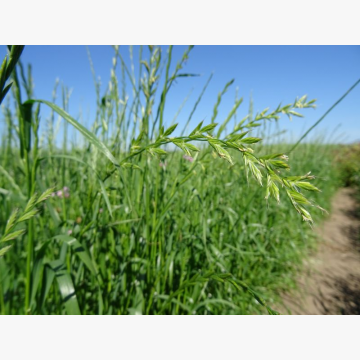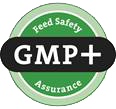- Home
- Seeds
- Fodder grasses and legumes
- FORAGE GRASSES
- Italian ryegrass MEROA RvP
FOR CONSULTATIONS APPLY TO:
Commercial director
Lina Smalskienė
tel. +370 618 02 551
e-mail linak@agrolitpa.lt
Sales manager
Tautvydas Kliučininkas
tel. +370 681 35 093
e-mail tautvydask@agrolitpa.lt
Sales manager
Eglė Petkevičienė
tel. +370 626 95 458
e-mail eglep@agrolitpa.lt
Sales manager
Kotryna Nakrošytė
tel.: +370 601 39 282
e-mail kotryna@agrolitpa.lt
Products
A late, high yielding tetraploid Italian ryegrass with good resistance to rust
- High yields
- Very good regrowth
- Bigger, more succulent leaves
- Higher sugar content
- Ideal for dairy, beef, and other high-performance forage applications
- Performs very well as a cover crop, providing good weed suppression and generous biomass
- High yields of green mass
- Large, succulent, broad leaves
- The dry mass yield of the last cutting - 5.374 t/ha
- Winter hardiness – excellent (up to 10 % of plants damaged in the trials)
- For fodder purposes can be sown both in autumn and spring
- Grows only foliage (no panicles) in the sowing year
- Produces panicles in the second year after sowing in a cool climate zone
- Produces abundant foliage in spring
- Regenerates well
- Resistant to rust and grey leaf spot (Pyricularia grisea)
- Leaves are high in carbohydrates (sugar)
- Excellent forage quality as expected from late maturing ryegrass
- Crude protein content – 22 %
- NDF (neutral detergent fiber content) – 45.7 %
- ADF (Acid detergent fiber content) – 28.2 %
- Nutritional value (NEL, Net Energy for Lactation) – 0.71
- Perfect for cattle, dairy cows, sheep and goats
- Suitable for hay and silage
- Also suitable for green manure (suppresses weeds well, produces a lot of green mass)
- Optimal soil pH is 5.5-7.0
- At least 550 mm of rainfall would be required for growing
- Non-formation of stems in the first (sowing) year – 2 (points out of 4)
- Resistance to rust – 1-2 points (out of 4)
- Persistence – 2 points (out of 4)
- Yield in the spring harvest (when sown in autumn) – 3 points (out of 4)
- Total yield (when sown in autumn) – 3 points (out of 4)
- Heading time (according to Belgian research) – May 11
- Persistence – 5.9 points (out of 9.0)
- Resistance to rust – 4.7 points (out of 9.0)
- Non-formation of stems in the first (sowing) year, when sowing in spring – 6.1 points (out of 9)
- Yield of the 1st harvest (sown in autumn) – 104 % (100 = average of all tested varieties of this group)
- Total yield (sown in autumn) – 100 % (100 = average of all studied varieties of this group)
- First-year yield (sown in autumn) – 100 % (100 = average of all studied varieties of this group)
- First and second year yield (sown in autumn) – 98 % (100 = average of all studied varieties of this group)
*The highest number means the most favourable rating
**Source: ILVO Mededeling 223, décembre 2016. Catalog Belge – description et recommandation – plantes fourragères et engrais verts - 2017.
- Yield in spring – 3 points (out of 4)
- Overall score – 3 points (out of 4)
- Persistence – 2 points (out of 4)
- Resistant to crown rust – 2 points (out of 4)
- Forms few stems in the year of sowing – 2 points (out of 4)
*ILVO data in the catalogue
The varietal parameters may differ from those indicated here when the testing circumstances differ from quondam
Recommended sowing rate: for pure crop – 22-27 kg/ha, in mixtures with annual clover – 12-20 kg/ha
Recommended sowing rate when growing for green manure: 25-30 kg/ha kg/ha
Keravos sreet. 17, Kerava,
LT-38 131 Panevėžys district, LITHUANIA
Enterprise's code 168598128
VAT code LT685981219
Tel. +370 615 11 315
E. mail info@agrolitpa.lt




.JPG)

